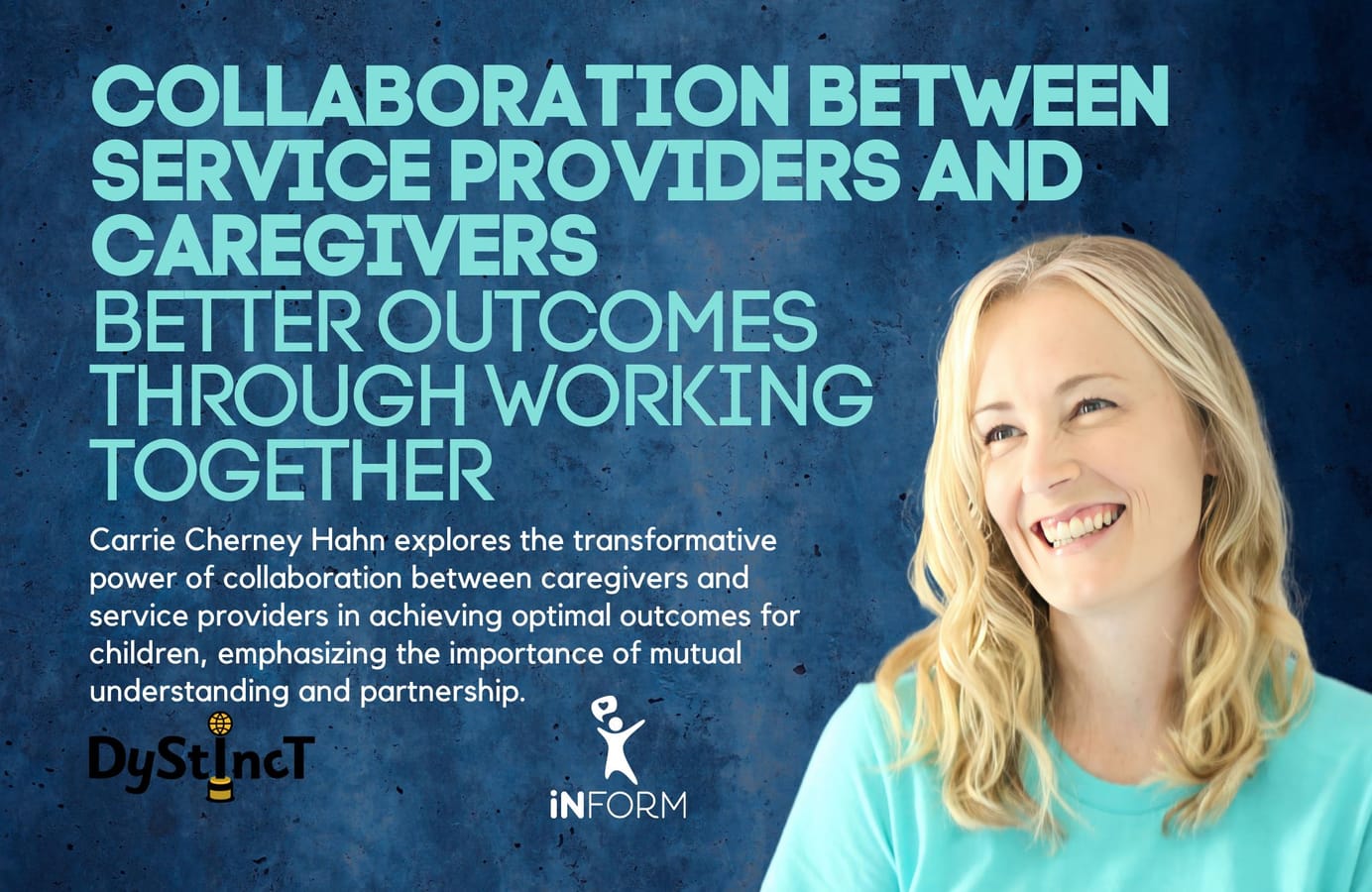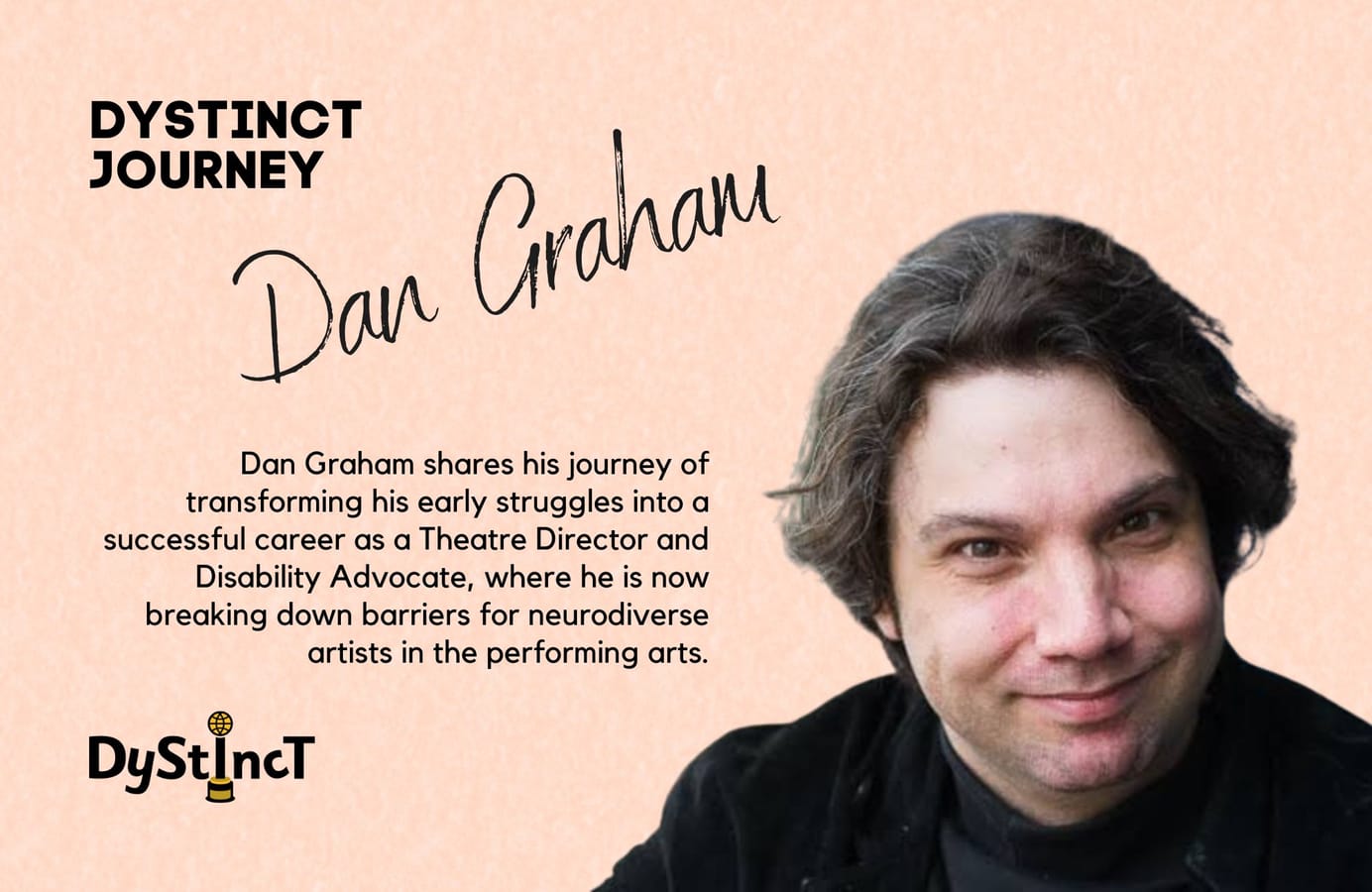
Issue 20: Collaboration Between Service Providers and Caregivers: Better Outcomes through Working Together | Carrie Cherney Hahn
Carrie Cherney Hahn explores the transformative power of collaboration between caregivers and service providers in achieving optimal outcomes for children, emphasizing the importance of mutual understanding and partnership.
Before I was a mom, I was a pediatric speech-language pathologist (SLP), and before I was a pediatric SLP, I was a graduate student. In graduate school, many classes center around formal aspects of speech-language pathology, like assessment procedures, evaluation considerations, diagnoses, and treatment strategies. The model is designed to create professionals who feel confident in their abilities to serve the clients that are on their caseload. Professionalism has an implication of independent competence. When I was in graduate school, what I envisioned professional competence to look like was a service provider who walked into the room knowing exactly what to do. I had no idea, at that time, how competence in caregiver collaboration is a key element in being an ethical and impactful practitioner.
When I was in graduate school, I had a unique opportunity to participate in a grant project called the Communication and Autism Project. (CAP) In addition to taking autism-related coursework every semester and doing graduate research related to autism, CAP also paired students up with a family who had at least one autistic child. As a part of CAP, I went on community outings with the family that I was paired with and provided respite care to them every month.
I don’t care if he ever strings a single bead in his entire life. I would love for him to be able to pull his pants up, though.
At the time, I had no idea how positively impactful or rare this opportunity was. Because I was paired with a family, I had the opportunity to experience day-to-day happenings in their home. I had the opportunity to hear the primary caregiver talk about upcoming IEPs, her feelings about goals that service providers were recommending, and her explanations regarding their misalignment. I’ll never forget when she told me how annoyed she was that her son’s occupational therapist was recommending a goal for stringing beads. “I don’t care if he ever strings a single bead in his entire life. I would love for him to be able to pull his pants up, though.”
This experience was invaluable and offered me a different perspective. In graduate school, much of my instruction was “by the book,” and what I didn’t know then that I know now is that “the books” that we are instructed from have historically not been written by people who have ever actually received service or cared for someone who has.
After graduation, my first couple of jobs were in settings that limited my interaction with caregivers. In these settings, the clients that I served typically arrived at the setting via bus, and the only opportunity that I had to connect with caregivers was via phone call or during meetings, which didn’t happen very often. In these settings, my role was often more prescriptive and without the level of caregiver input that I now have come to consider to be ideal.
After about four years as an SLP, I was assigned to work with the birth-to-three population, and services were provided in the home. Collaboration with the child’s primary caregiver was a foundational principle of these services. The model that I was operating in while working with the birth-to-three population was to be flexible and collaborative. We were to check in with the caregiver at the beginning of each session to find out what was most pressing and then come up with a plan together of what might help. I was initially a bit nervous, as I had become accustomed to pre-planning my sessions, and felt anxious about being able to “think on my feet.”
‘The books’ that we are instructed from have historically not been written by people who have ever actually received service or cared for someone who has.
Looking back, I had no idea at the time that this model would help me develop the skills that I did not receive a lot of instruction on during school but would someday consider to be the most important.
Once I settled into this model, I absolutely loved it. I found that collaborating with parents was not only best for the child, but it also helped me understand a couple of very important concepts that are paramount to service provision; that the caregiver is a wealth of information and instinct and that the functional impact of service is of greatest significance. I looked forward to interactions with caregivers and became a bit of a meeting nerd, loving every chance I had to sit down and talk to caregivers about their kids.
Shortly after the opportunity to do birth-to-three services, I became a mom to my older son, whom I will refer to as Pete. As a recently self-diagnosed ADHDer, I have discovered that my investment in knowing topics of interest inside and out is a gift of my neurology, and my kids are at the top of my list of interests. Pete is now 12, but when he was in preschool, and I found out that they did parent-teacher conferences, I was absolutely thrilled. I looked forward to sitting down with his teacher and talking about nothing but my kid for the 10 to 15 minutes that I was allotted. I always had a million questions and probably kept them over time because I love to talk about my kids.
This post is for paying subscribers only
SubscribeAlready have an account? Log in


